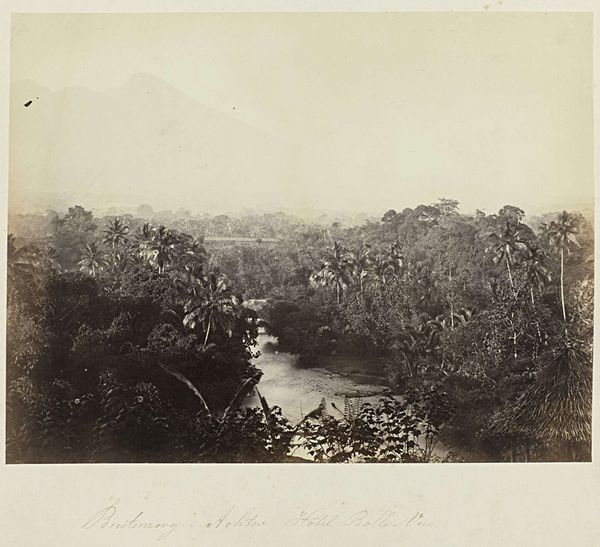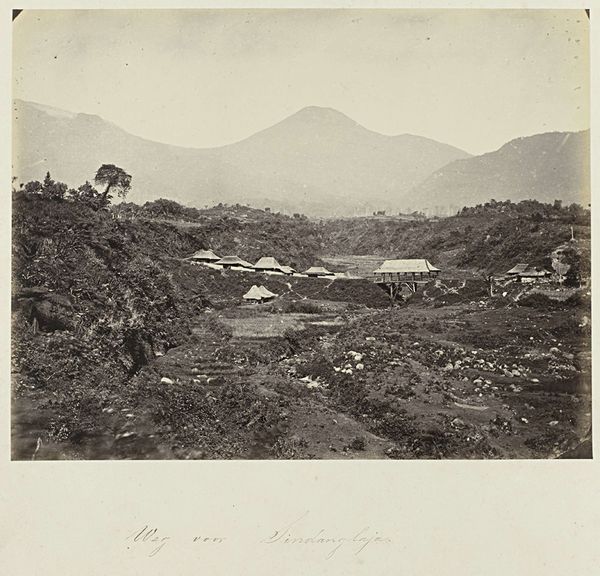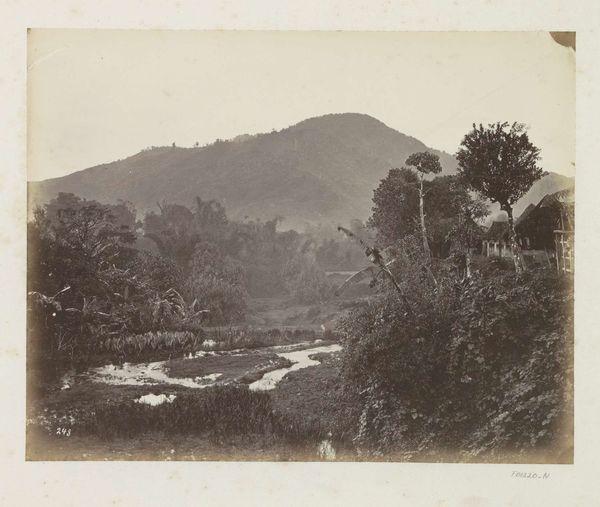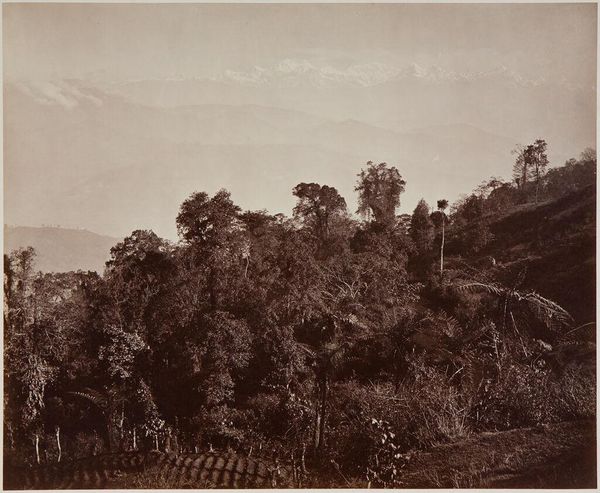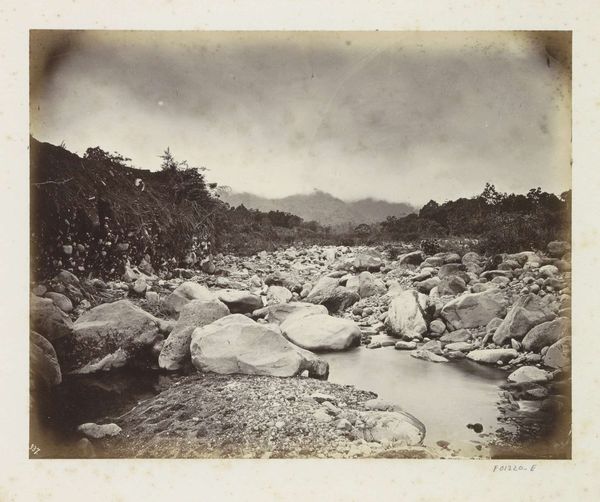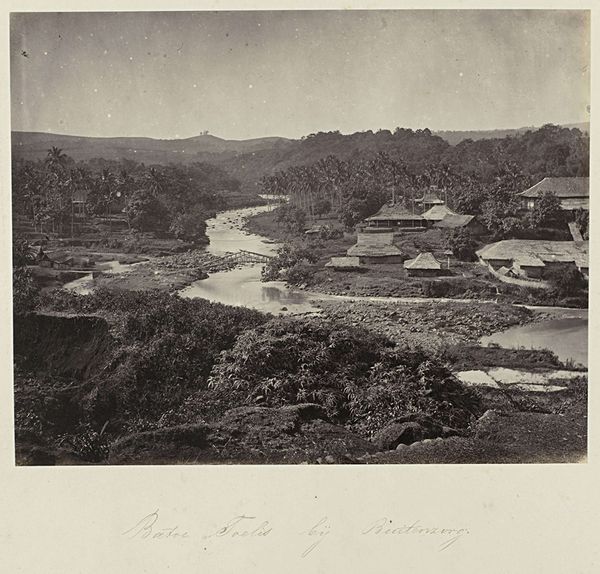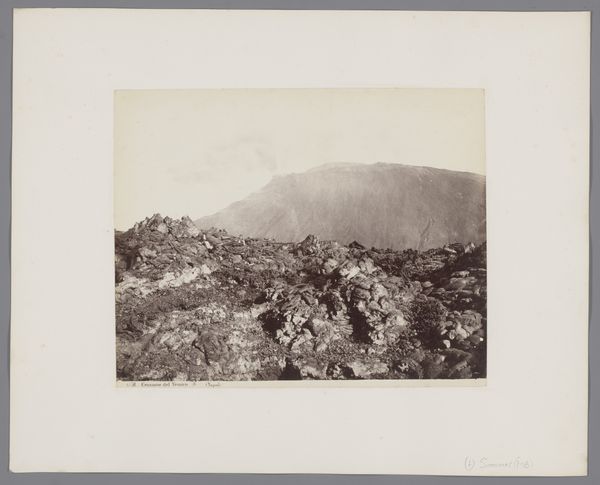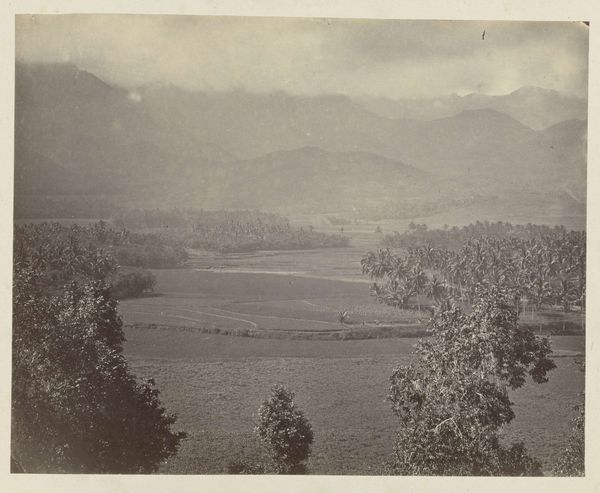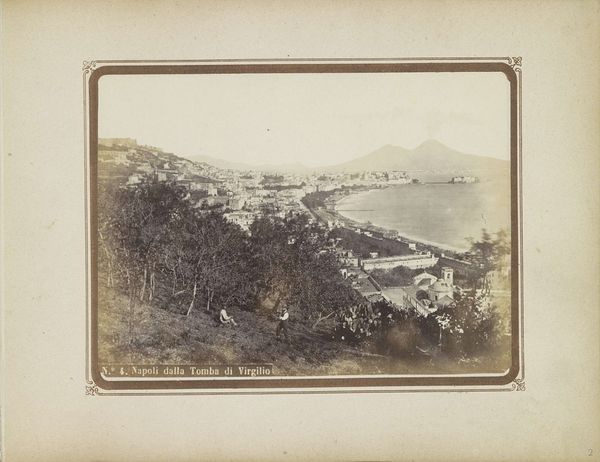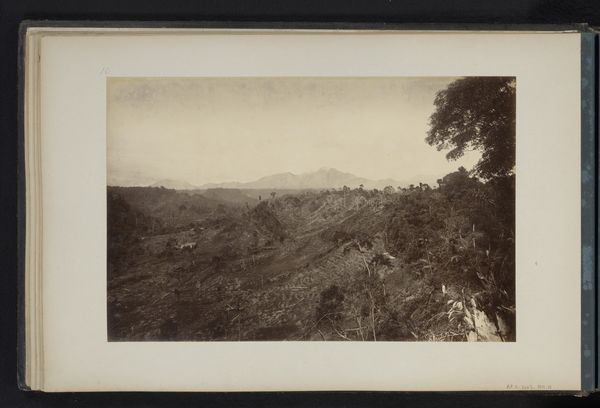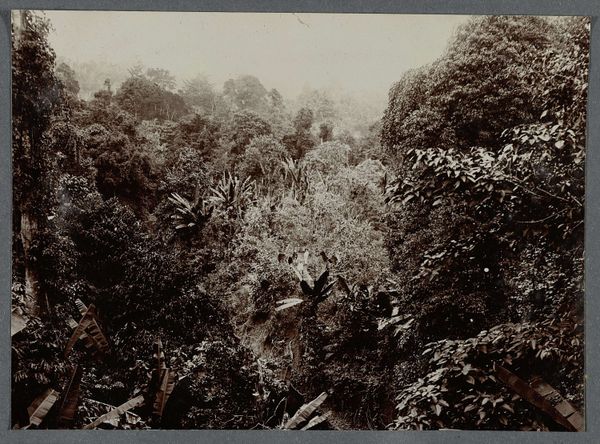
print, photography, gelatin-silver-print
#
16_19th-century
# print
#
landscape
#
photography
#
orientalism
#
gelatin-silver-print
#
realism
Dimensions: height 209 mm, width 270 mm
Copyright: Rijks Museum: Open Domain
Editor: Here we have Woodbury & Page's photograph, "Buitenzorg - Achter Hotel Belle-Vue," a gelatin silver print made sometime between 1863 and 1869. The way the photograph renders this landscape – dense foliage and a distant mountain – almost feels like a dream. What stands out to you? Curator: It's interesting you say 'dream,' because that liminal space – the edge between known and imagined – feels very much at the heart of so-called Orientalist photography. Look at how the "exotic" landscape, teeming with plant life, dwarfs any human presence. Does it strike you as an objective record or something else? Editor: I see what you mean! It's less a factual document and more like... a staged encounter. All those palm trees feel like they’re there to fulfill a Western fantasy. Curator: Precisely! The very act of framing, choosing this vista and not another, that's an act of creation, not simply reflection. And consider the title—'Behind the Belle-Vue Hotel.' What's more ‘civilized’ than a hotel, offering a strategic vantage point from which to ‘consume’ this landscape? Editor: That's such a key observation. I was just seeing a pretty picture, but the hotel’s presence reframes the entire scene! Like a tourist’s curated viewpoint. The implicit colonialism makes me uncomfortable. Curator: Exactly. And that's the power and the problem with these images. They are undeniably beautiful, but that beauty often masks a more complicated story about power, perspective, and representation. Editor: I am going to spend way more time considering the photographer's point of view. Curator: Agreed. We’re looking at a world seen through a very particular lens—one we must always question, even as we appreciate the sheer artistry.
Comments
No comments
Be the first to comment and join the conversation on the ultimate creative platform.

